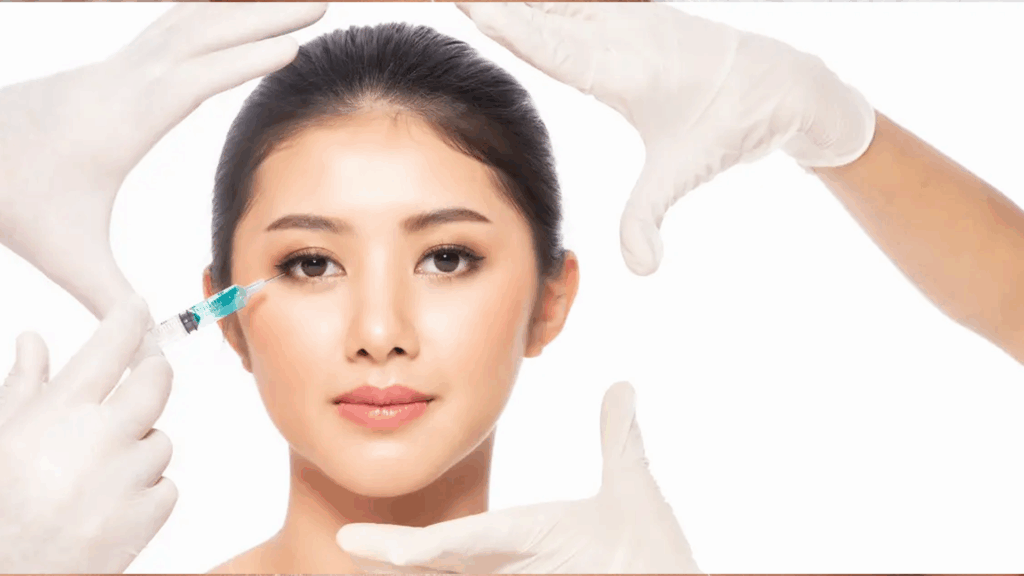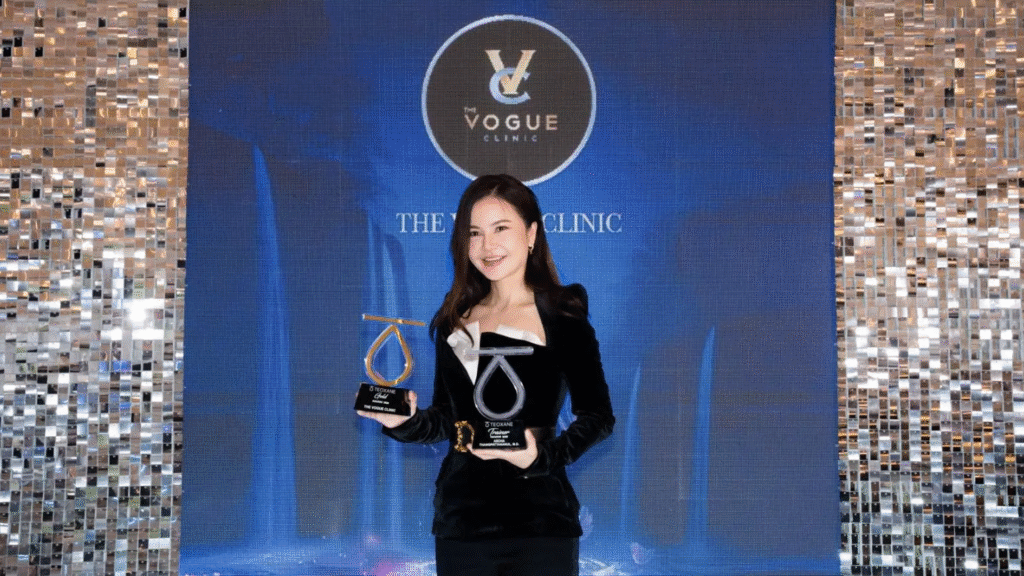Many people who are considering double eyelid surgery may feel anxious or worried after seeing numerous reviews where problems such as bulging eyes or difficulty closing the eyes occur. They wonder if they will experience the same issues or if these problems are common after double eyelid surgery. This article will address those concerns.
Table of Contents
- What is Bulging Eyes? What Kind of Eyes Are Considered Bulging?
- Causes of Bulging Eyes
- How to Fix Bulging Eyes Problems
- How Many Techniques Are There for Double Eyelid Surgery?
- Why Should One Consider Double Eyelid Surgery?
- Types of Double Eyelid Surgery
- Possible Complications After Double Eyelid Surgery
- What Makes Beautiful Eyes? What Characteristics Should They Have?
- What Are the Different Styles of Beautiful Eyes?
What is Bulging Eyes? What Kind of Eyes Are Considered Bulging?
In medical terms, bulging eyes are called ectropion, which refers to the rolling out of the eyelid edges. Normally, after double eyelid surgery, the eyelashes will slightly curl upwards, creating a beautiful appearance, and the edge of the upper eyelid will remain flat against the eyeball. This is considered normal.
However, some individuals with more elastic eyelids may experience slightly red edges where they can apply inner liner. The lower eyelid edge should still be flush with the eyeball, and this does not indicate any problem. But if after surgery, the inner edge of the eyelid is visible and protrudes outward, this can be a sign of an issue. In this case, the eyelid edges will no longer lie flat against the eyeball, causing the eyes to not close completely, tears may continuously flow, and irritation or blurred vision may occur.
What causes eyelid eversion (ectropion)?
It is caused by an inappropriate surgical technique, such as stitching the eyelid crease too high or attaching the eyelid crease to the inner eyelid muscles in a way that creates an improper fold, or excessive swelling. An experienced surgeon will understand the causes of these issues and will usually avoid them. While it’s not necessary for the patient to know the exact cause, it is important for the patient to thoroughly research and choose the right clinic and surgeon before undergoing surgery.
How can eyelid eversion (ectropion) be corrected?
If severe eyelid eversion (ectropion) occurs after double eyelid surgery, along with difficulty closing the eyes, it should be corrected as soon as possible.
This is because the scar tissue (fibrosis) has not yet formed, and the eyelids can be repositioned easily. However, if left untreated for more than two weeks, when the scar tissue has formed and adhered, the corrective surgery may not be as effective. Although performing surgery during the initial post-operative period, when swelling and redness are still significant, can make the procedure more difficult, it is necessary. It is highly recommended to seek correction by an experienced surgeon.
If the examination shows that there is no serious risk to the eyes or if the eyelid eversion is not severe, it is advised to wait for the inflammation and swelling to subside and reassess. From the doctor’s experience, patients who sought correction for double eyelid surgery that led to mild eyelid eversion right after surgery have seen improvement over time. Even if there is still some mild eversion remaining, it usually becomes less severe compared to the initial stage. The doctor will recommend checking if there is any issue with closing the eyes completely, leading to dry eyes or corneal abrasions. If there is no danger, in order to achieve the best results, the doctor advises being patient and allowing time for recovery.
What is double eyelid surgery?
The basic structure of Thai people’s eyes usually has more fat around the eyelids, thick eyelids, drooping eyelids, single eyelids, hidden double eyelids, and asymmetrical eyes. Additionally, there may be problems caused by eye muscle abnormalities, such as droopy eyes, eyes always appearing tired, or what we call weak eye muscles. If these issues are left untreated, they can lead to eyelid ptosis, which will reduce our vision efficiency.
Therefore, the best solution is surgery to correct the eyelid structure by making an incision on the eyelid and stitching the skin together to create a new eyelid fold, using a special technique at The VOGUE Clinic. This approach is different from traditional eyelid surgery methods, with a focus on…
- The eyelid structure is adjusted to suit the individual’s face as a priority.
- The incision is very small, making the scar almost invisible.
- After the procedure, patients can resume their daily activities as usual.
- Swelling and bruising are minimal.
- The surgery takes a short amount of time.
Techniques for double eyelid surgery.
- Short Incision Double Eyelid Surgery Technique
This method is suitable for individuals with minimal fat on the eyelids. It is widely popular and ideal for those with monolids, thin fat layers, and no significant eyelid sagging. The doctor creates a double eyelid crease by stitching 2-3 points without making a long incision. There is no cutting of excess skin or fat removal, resulting in no visible wound. After the procedure, there may be slight swelling, but the recovery is fast with no downtime. Patients should avoid rubbing the eyes harshly, as it may cause the stitches to come loose. Around one month after the procedure, the swelling subsides, and the eyelids form a defined, natural-looking double fold. - Full Incision Double Eyelid Surgery Technique
This technique is suitable for those with thick or fatty eyelids. The surgeon removes some fat and excess skin to match the facial structure. A long incision is made to create a new eyelid crease, helping to resolve droopy eyelid issues. The incision is made from the inner to the outer corner of the eyelid to access and remove excess fat. Fine sutures are then used to close the wound, which is hidden in the natural eyelid fold. This method enhances the eyes, making them appear bigger and more refreshed. - Surgery Duration
The double eyelid surgery takes approximately 60 to 90 minutes. Local anesthesia and short-term sedation are used. Patients are required to follow up at the clinic as instructed and have their stitches removed one week post-surgery. Normal daily activities can typically be resumed within 3–4 days after the procedure.
Why Get Double Eyelid Surgery?
Double Eyelid Surgery is a procedure that creates a new eyelid crease. The surgeon evaluates the patient’s condition and selects the most suitable technique to address their concerns. This surgery helps boost confidence and restores a youthful, lively, and refreshed look to the eyes. Therefore, double eyelid surgery is ideal for individuals with the following concerns:
- Monolids, small eyes, or narrow-looking eyes
- Hidden double eyelids (double eyelids that are not clearly visible)
- Asymmetrical eyelids
- Tired-looking eyes, droopy or dull appearance
- Drooping outer corners of the eyes
- Sagging eyelid skin covering the pupil, affecting vision
- Excess skin covering the inner or outer corners of the eyes, making the eyes appear less bright
Types of Double Eyelid Surgery
Surgeons can help enhance your eyes with beautifully defined eyelid creases, just the way you desire. The outcome depends on your individual condition and the surgical technique chosen. The surgeon will carefully assess, evaluate, and correct based on your specific concerns to deliver natural, beautiful results that suit you perfectly.
- Incisional Method
This method creates a new eyelid crease by making an incision along the desired eyelid line. There are two main techniques: full incision and short incision. These techniques allow for the removal of excess fat and correction of poorly defined eyelids, resulting in sharp, natural-looking double eyelids. - Non-Incisional Method (Suture Technique)
This technique involves stitching the upper eyelid at three specific points to form a crease. It is ideal for patients with minimal eyelid fat and no significant sagging, creating natural double eyelids without cutting the skin. - Plasma Laser Eyelid Lift
This technique uses plasma energy to gently tighten sagging upper eyelid skin. It is suitable for individuals who already have double eyelids but are experiencing mild drooping. The procedure causes minimal swelling, heals quickly, and leaves no visible scars. The result is naturally enhanced, well-defined eyes. - Inner or Outer Eye Corner Surgery
This method involves trimming the skin at the inner or outer corners of the eyes to widen the eyes. The incision is meticulously sutured and nearly invisible, making it suitable for those with hooded inner or outer corners who want rounder, more open eyes. - Upper Eyelid Lift (for Droopy Eyelids)
This procedure lifts the upper eyelid, with the incision hidden along the eyebrow line. It is suitable for individuals with drooping eyelids, especially at the outer corners. - Lower Eyelid Fat Removal
This surgery removes excess fat from under the eyes through the lower eyelid, helping to smooth and flatten the under-eye area for a more refreshed appearance. - Eyelid Muscle Repair (Ptosis Correction)
This technique repairs weakened eyelid muscles, improving eyelid strength and allowing the eyes to open fully without lifting the brow or forehead. It results in brighter, more alert-looking eyes.
Possible Complications After Double Eyelid Surgery
Nowadays, double eyelid surgery has become incredibly popular, especially with the current trend favoring big, bright eyes and smiles that shine through the gaze—enhancing overall facial charm. This has led many women to opt for double eyelid surgery. However, it’s important to remember that all types of cosmetic surgery carry risks, including potential side effects if proper post-operative care isn’t taken. Patients should strictly follow their surgeon’s instructions.
So today, let’s go over some of the common side effects after surgery. Don’t worry—these symptoms typically improve gradually over time.
Short-Term Side Effects
These are symptoms that may occur within 7–14 days after surgery
- Bruising
This is a common symptom caused by minor bleeding under the skin, resulting in greenish or purplish discoloration. It’s more noticeable in individuals who bruise easily. The best remedy is to apply cold compresses during the first few days, followed by warm compresses later on to help reduce bruising. - Inflamed Wound
Proper wound care is essential after surgery. If the wound is not kept clean and dry, or if cleaning is insufficient, it may lead to infection. Be diligent with wound care to avoid complications. - Wound Separation
This can occur due to suture issues, premature suture loosening, or inflammation. If you notice the wound edges separating, consult your surgeon immediately. Leaving it untreated may result in poor scarring or uneven eyelid creases. - Incomplete Eye Closure
Some patients may experience temporary difficulty fully closing their eyes, often due to swelling or the lingering effects of anesthesia. Don’t worry—this usually resolves as the swelling subsides. If there’s eye irritation, using artificial tears during the day can help relieve discomfort.
Long-Term Side Effects After Double Eyelid Surgery
- Loss of Eyelid Crease
This can happen when patients rub their eyes frequently due to irritation, or when the surgical technique lacks precision. If the crease disappears, consult your surgeon promptly—ideally within 14 days—for possible revision surgery. - Uneven Swelling of Eyelids
It’s normal for swelling to take up to 3 months to fully subside. If double eyelids appear asymmetrical, it may be due to excessive fat removal from one eyelid or underlying eyelid muscle weakness (ptosis). - Overly Large Crease
This often results from a crease being sutured too high or from removing too much fat from the eyelid, leading to an unnatural or surprised look. - Visible Scarring on Double Eyelids
Normally, the swelling and incision lines blend smoothly into natural folds within 3–6 months. However, poor wound care or individual tendencies (like keloid formation) can cause visible or raised scarring, affecting the overall appearance.
What Makes Beautiful Eyes?
Apart from eye shapes that align with the principles of physiognomy, there are also beautiful eye shapes that surgeons use as a guideline when performing double eyelid surgery for patients. These are considered well-balanced eyes—both medically and according to physiognomy—which have the following characteristics:
- Eyes should be open, round, and large, with the iris clearly visible. When the eyes are fully open, about 90% of the iris should be visible, and the upper eyelid should cover no more than 1–2 mm of the iris.
- The iris should be centered in the middle of the eye. The white space (sclera) on the inner and outer corners of the eyes should be approximately equal in width, ensuring the iris appears centered. Those with droopy eyelids or narrow inner corners may experience an off-center iris, making the eyes appear misaligned.
- The lower eyelid should align with the bottom of the iris. Similar to almond-shaped or round eyes, the lower eyelid should sit perfectly at iris level—not lower or higher—as misalignment can make the eyes appear smaller or squinty.
- Eye sockets should not be deep, and under-eye areas should not appear sunken. A well-balanced eye contour looks full and youthful. Age-related changes or bone resorption can lead to hollow eye sockets, making the eyes look tired. In such cases, surgeons may transfer fat or inject fillers to restore volume around the eyes.
- The eyelid crease should match the shape of the eyes and should not extend too far beyond the outer corner. If the crease extends too far, it can cause the outer corner to droop, making the eyes look sad, tired, or older. In such cases, procedures like lateral canthoplasty (fox eye surgery) or long-incision eyelid correction to remove excess skin may be recommended.
- The eyebrows and eyes should not be too close together. For individuals with small eyes or low-set brows, the space between the eyes and brows can appear too narrow, making the eyes look less prominent. Surgeons may opt for a smaller double eyelid fold or consider brow lift surgery to create more space and improve eye proportions.
What types of beautiful eye shapes are there?
- Almond Eyes
This eye shape perfectly balances roundness and length in a harmonious and proportional way. The upper and lower eyelids are slightly away from the iris edge. It is one of the most popular eye shapes. - Round or Big Eyes
Similar to almond eyes but rounder and larger, showing more of the iris. The distance between the iris edge and eyelids is roughly equal. This eye shape is also very popular as it enhances a sweet, lively, and bright facial expression. - Upward Slanting Eyes or Cat Eyes
This eye shape has an upward slant at the outer corners with a well-defined double eyelid. It gives a sharp, confident, and charismatic look. - Downward Slanting or Droopy Eyes
This eye shape features downward slanting outer corners, making the eyes look droopy and giving a sad or less lively appearance. - Single Eyelid, Small Eyes
Common among Asians, this eye shape has a single eyelid without a clear fold, making the eyes appear smaller and narrower.
In addition to these eye shapes, there are also common eye problems that are frequently encountered.
- Eyes that are too close
This occurs when both eyes appear too close together and look disproportionate. It may be caused by the pupils being positioned too near the inner corners of the eyes. - Eyes that are too far apart
This problem happens when the distance between the inner corners of both eyes is too wide. Doctors may perform medial epicanthoplasty (opening the inner corners) to reduce the gap between the eyes. - Droopy eyes
This eye shape is characterized by drooping eyelids, making the eyes look sleepy all the time. It can also cause asymmetry between the two eyes. Surgeons may use short-incision double eyelid surgery to adjust the fat and re-lock the eyelid crease, or perform a long-incision technique if there is excessive fat and thick eyelids to create bigger, more open eyes.
What should good physiognomy of the eyes, the corners of the eyes, and the temples be like?
Facial Features of the Eyes, Outer Eye Corners, and Temples (Hu Xi Geng) Refer to Married Life, Spouse, and Love.
Good Eyes:
Clear and bright pupils, attractive gaze, the focal point of attention. The black part (pupil) and the white part (sclera) have a distinct contrast.
Poor Eyes:
Dull pupils, harsh and stern gaze, thick eyebrows with a sad expression, eyes lacking focus or purpose.
Key Features:
Full and plump temples, balanced with the hairline and forehead. The number of wrinkles at the outer eye corners is minimal. A natural, flawless smile indicates a harmonious married life. Men will have a virtuous wife, and women will have a good husband.
Negative Traits:
Wrinkles at the outer corners of the eyes, prominent cheekbones, and protruding bones. For both men and women, these signs indicate misfortune in marriage or with a spouse. If one tries to go against this fate, it may result in ongoing relationship problems.
What should good physiognomy be like under the eyes?
Under-Eye Feng Shui (Nàm Nưng Gěng) refers to fortune and comfort in life.
Positive traits:
Full and plump, bright and clear, smooth and radiant — this signifies having high status and wealth, living a prosperous and happy life, with thriving descendants.
Negative traits:
Sunken hollows, deep grooves, excessive under-eye bags — this signifies bad luck, difficulty finding a suitable partner, or having unruly, hard-to-raise descendants. If the area is darkened or shadowed, it indicates problems with one’s partner and children, possibly facing misfortune with offspring.





